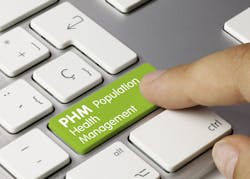A study conducted by HealtheLink, the health information exchange for Western New York, suggests that when a population health management tool and a value-based payment model such as Comprehensive Primary Care Plus (CPC+) are in place at the same time, primary care practices tend to have significantly better outcomes as compared with instances where only one or none of the programs are in place.
With support from the Milbank Memorial Fund, HealtheLink conducted the small study to examine if population health analytics helped to improve care quality and efficiency in primary care practices enrolled in the Centers for Medicare and Medicaid Services’ CPC+ program, which provided resources and incentives for primary care providers to improve quality, access, and efficiency of care.
“While the CPC+ program creates incentives to reach higher goals, our population health tool – HealtheOutcomes – provides the means for reaching such goals, with real-time access to how providers are doing against quality measures,” said Dan Porreca, executive director of HealtheLink, in a statement. “As practices continue to shift towards value-based payment models and population health management, this study confirms practices had better outcomes in the CPC+ program when utilizing HealtheOutcomes.”
HealtheOutcomes provides both clinical and claims data from participating providers and payers and enables practices to streamline information from multiple data sources to better identify trends in their practice.
The study assessed data collected from four different groups of practices in the Western New York region that had similar patient populations. Only three of the four groups were enrolled in the CPC+ program, and only two practices used the HealtheOutcomes tool.
Outcomes among the four groups were measured from Jan. 1 – Dec. 31, 2020. The group consisting of both CPC+ and HealtheOutcomes practices significantly outperformed their counterparts in various outcomes. When measuring data, membership in both programs together led to a 24.1 percent reduction in admission rates and a 21 percent reduction in outpatient surgery. It also reduced the length of stay in hospitals by 32.7 percent and the readmission rate by 30.4 percent compared with practices that didn’t participate in either CPC+ or HealtheOutcomes.
“Although the study is small, it raises several important issues,” said Lisa Dulsky Watkins, M.D., a program officer at the Milbank Memorial Fund, in a statement. “The federal evaluation of the CPC+ model looked exclusively at Medicare fee-for-service beneficiaries, not at anybody covered by commercial insurance or Medicaid. This study examines that broader population and adds the impact of a high-functioning health information exchange, facilitating the population health tracking and improvement that CPC+ was designed for. By demonstrating a combined positive impact, it will add to the ongoing conversation about how best to support primary care moving forward.”


